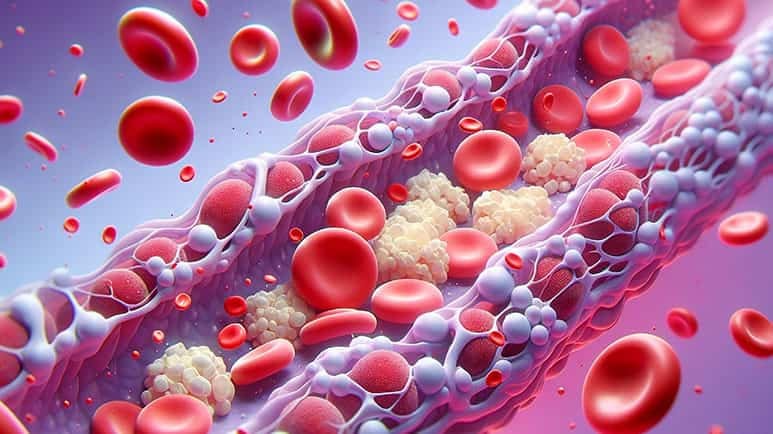Endotoxin/LPS Is a Major Driver of Blood Clotting, Sepsis, Heart Attacks, and Strokes
Description
STORY AT-A-GLANCE
Endotoxin, a toxic molecule released by bacteria in your gut, enters your bloodstream and directly triggers blood clot formation — even in people with no signs of infection or heart disease
Researchers have shown that certain bacterial types, such as E. coli, are especially effective at setting off your body’s clotting response, mimicking what happens during sepsis and other life-threatening events
Everyday habits that weaken your gut barrier — including eating seed oils, ultraprocessed foods, and alcohol, or living under chronic stress — make endotoxin exposure common, keeping your blood in a “primed” state to clot
Chronic, low-grade exposure to bacterial toxins links gut health to cardiovascular problems, explaining why heart attacks, strokes, and clotting disorders often strike people who appear healthy
Supporting your gut with easy-to-digest foods, antioxidants like niacinamide and vitamin E, and natural binders such as raw carrot salad or activated charcoal helps neutralize endotoxin and keep your blood flowing freely

Blood clots are meant to save your life — not threaten it. Yet when your body’s natural repair system misfires, the results are often catastrophic. Clots that form inside healthy vessels block oxygen to vital organs, causing strokes, heart attacks, and tissue damage that often strike without warning. What’s more troubling is that these events are rising among people with no classic risk factors like obesity, suggesting that something deeper is driving the body’s clotting machinery into overdrive.
In recent years, scientists have begun to uncover what that “something” is — and it starts in your gut, not your heart. Hidden inside your intestines are trillions of bacteria that constantly interact with your immune and circulatory systems. When your delicate gut barrier becomes leaky, fragments of bacterial toxins enter your bloodstream, where they trigger the same inflammatory and clotting pathways seen in severe infection.
It’s a process that unfolds quietly for years before symptoms appear, linking everyday digestive health to cardiovascular events once thought to be unrelated. This new understanding shifts the focus from damaged arteries to disrupted biology.
It explains why so many people with “normal” test results still experience clotting issues and why conventional treatments often miss the mark. The following sections explore how researchers traced this invisible connection between gut toxins, inflammation, and blood coagulation — and what that means for your long-term health.
Different Types of Bacterial Endotoxin Trigger Blood Clotting in Distinct Ways
In a study published in the Journal of Biological Chemistry, researchers discovered how bacterial toxins directly trigger blood clots.1 They showed that lipopolysaccharide (LPS) — the toxic outer coating found on certain bacteria, like E. coli, activates your body’s clotting system.
These bacterial toxins, called endotoxins, interact with proteins in your blood that are responsible for starting the clotting process. When this happens, your blood begins forming clots even without injury — a reaction that’s meant to protect you but becomes dangerous when it happens inside healthy blood vessels.
Some bacterial types are far more dangerous than others — Researchers compared several common forms of E. coli to see which caused the strongest reaction. They found that one particular type was especially effective at turning on the body’s clotting process all by itself.
<label class="hide-text" contenteditable="false">Text within this block will maintain its original spacing when published</label>In their experiments, this bacterial toxin set off a rapid chain reaction in the blood, similar to what happens during sepsis — a severe, life-threatening condition where clots form throughout the body and block blood flow to organs.
The shape of the bacterial toxin determines how harmful it is — The team discovered that the structure of each LPS type — its shape and electrical charge — determined how strongly it affected clotting. When the LPS molecules clumped together into small clusters, they created perfect “landing pads” for blood proteins to latch onto and activate clot formation.
<label class="hide-text" contenteditable="false">Text within this block will maintain its original spacing when published</label>But when the LPS molecules were single, floating molecules, they did very little. This explains why even small amounts of bacterial debris in your blood cause serious clotting, while purified forms in lab conditions might not.
Clotting started quickly after exposure to bacteria — In animal studies, the researchers observed that blood clotting began within hours after being exposed to E. coli. As the endotoxins entered the bloodstream, the proteins responsible for clotting switched on in sequence, showing a direct link between toxin levels and clot formation. This rapid response mirrors what doctors see in people with sepsis, where inflammation and clotting accelerate within hours of infection.
Even bacterial fragments — not just infections — cause clotting — The study showed that it doesn’t take a full-blown infection to trigger this process. Even fragments of dead bacteria circulating in your blood act like magnets for clotting proteins. This suggests that bacterial toxins leaking from your gut or mouth quietly activate your body’s clotting system over time, even when you feel healthy.
This discovery helps explain why gut health affects your heart and circulation — Continuous, low-level exposure to endotoxins could keep your blood in a “primed” state — ready to clot at the slightest trigger. This constant activation increases your risk for heart attacks and strokes. Their findings highlight the importance of keeping your gut barrier strong and your microbiome balanced, since a healthy gut limits how much of these toxins escape into your bloodstream.
Everyday Gut Endotoxin Exposure Primes Your Blood to Clot
In his commentary on the Journal of Biological Chemistry study, bioenergetic researcher Georgi Dinkov explained how the same endotoxin mechanism described in the paper also occurs in everyday life.2
He noted that LPS — the bacterial fragment identified in the study — isn’t only a factor in sepsis, but also seeps into your bloodstream in smaller amounts after ordinary






